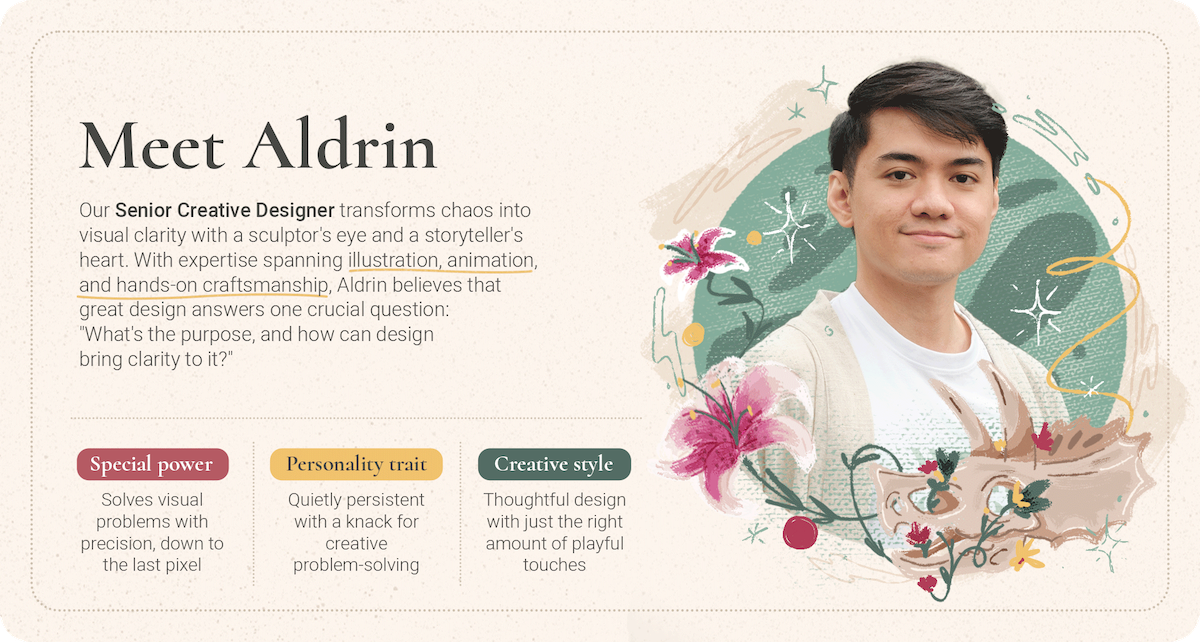
We talked about this dilemma in our first edition of Rise, and introduced the strategy core as a way to answer it.
The concept comes from the book, Good Strategy, Bad Strategy by Richard Rumelt. The core consists of:
- a problem diagnosis that identifies critical factors in a situation
- a guiding policy for coping with or overcoming the challenges identified
- a plan for systematic action that fulfills the guiding policy.

Rumelt didn’t offer frameworks for deriving all three components. Maybe he didn’t want to be prescriptive and recognized that different methods work for different contexts.
I tend to agree—to each his own.
Except, we’re living in volatile times. Marketers are under great pressure to justify every decision they make.
And in times like these, we crave certainty.
So we’re sharing with you three thinking tools that offer a concrete methodology for developing the strategy core.
3 thinking tools for developing the strategy core
1. Develop the diagnosis with 5 Whys
5 Whys is a method originally used by Toyota to diagnose root causes of manufacturing faults. In marketing strategy, you can use 5 Whys to discover why there’s a gap between your desired and current outcomes.
It doesn’t strictly have to be five. Keep asking until you uncover an underlying factor that’s either systemic (related to processes and structures) or related to mental models (beliefs and assumptions).
That’s why we chose this tool—it leads you to factors that are ingrained in corporate or broader culture. Addressing such factors makes a bigger impact than merely fixing the symptoms of a problem.

2. Guiding policy: Where to play, How to win
Where to play, How to win is a framework by the strategist Roger Martin.
We’ve chosen it as a tool for developing the guiding policy because it helps you identify your playing field (e.g., product category, audience segment, marketing channel) and the advantages or constraints you can leverage to win.
3. Systemic action: What Would Have To Be True (WWHTBT)
WWHTBT is a thinking tool, also by Martin, that asks you to imagine your desired outcome and the circumstances that would have to be true for it to be reality. You then choose the scenarios that let you make the most impact on the outcome.
We chose this tool for its simplicity and applicability across any situation.
Try it out: The (hypothetical) case of Klook
Let’s take Klook, a Hong Kong-based travel booking site, as a hypothetical example.
In 2016, they developed a content strategy that helped them rank for 80,000+ keywords despite competing in a crowded niche:

At the time, Klook’s strategy wasn’t common, especially among travel booking sites in Asia.
1. 5 Whys
Fast forward to today.
Let’s pretend I’m a marketer at Klook and I’ve observed a problem: it’s getting more difficult to capture traffic from organic search.
- Why is it getting more difficult to capture traffic from organic search?
- A: Because competitors X, Y and Z are capturing this traffic.
- Why are competitors X, Y, and Z capturing this traffic?
- A: Because they’re ranking for the same keywords as us.
- Why are they ranking for the same keywords as us?
- A: Because they’re using the same content strategy we use.
- Why are they using the same content strategy?
- A: Because they saw how successful our original content strategy was at capturing traffic.
We’ve diagnosed a deeper problem: Klook’s original content strategy was so successful that competitors have copied it. That means it’s using a marketing playbook that no longer gives it a competitive advantage.
✋ Remember, this example is purely demonstrative. It’s not based on actual answers from Klook. Another marketer could diagnose the problem differently if they had different observations or information, or if they kept probing.
In hindsight, this may seem obvious. But good insights often are. When we’re right in the middle of our problem, we have to take a few steps back to see it.
2. Where to play, how to win
We start by investigating what has changed in the playing field. You’d ideally interview customers to get useful insights.

Klook’s original blogging playbook was based on the fact that its target consumers used online search as their dominant holiday planning tool.
But not anymore. Klook found that social media is quickly overtaking traditional sources as the preferred trip-planning tool.
This info gives us a “where to play” possibility: social media.
But on which platform? Do they use their own channel or that of influencers? Which types of influencers? And how would Klook work with these influencers?
Past experience has taught Klook that placing influencers’ content on the company’s platform, and vice-versa, resulted in diluted branding for both parties.
This insight can help us answer how to win: By letting content creators on social media decide how they want to talk about Klook, when, and on which channel.
We could then craft the hypothetical guiding policy: Harness user-generated social media content, while being channel-agnostic and reducing creative control.
In a High Power Distance culture where decisions tend to go through many gatekeepers, reducing creative control is a bold move. But for a business model that relies on selling high volumes fast, letting users speak for themselves (and, inevitably, the brand) is a good product-marketing fit.
3. What Would Have To Be True
The answers to WWHTBT can set the foundations for systemic action based on the guiding policy.
For example:

In real life, for instance, this means launching the Klook Kreator program. The program:
- Lowers the barrier to entry by allowing even small-scale influencers to participate and by letting them sign up
- Incentivizes creators through commissions, promos, perks, and a dashboard that lets them track their earnings
- Reduces control by allowing creators to come up with their own content on their own platforms and channels.
A note on culture
No brilliant idea survives its first contact with reality.
When we first tried to apply these ideas, we faced hurdles:
🪟 corporate hierarchies that dictated strategy frameworks;
😳 nuances around problem diagnosis (being associated with a problem can make you lose face).
D.I.Y.
🏋️♀️ Mental exercise for your strategy muscles:
Think of a product or service you use and try reverse-engineering the business’ strategy core. Use the thinking tools here to guide you!
Let’s raise the bar of content marketing in Southeast Asia
We hope you’re enjoying Rise and find this newsletter helpful.
And if you do, why not share it with a friend?
Thanks for reading!
![]()
Katrina
with help from Nikki, Mike, and Sam
Illustrations by Aldrin



